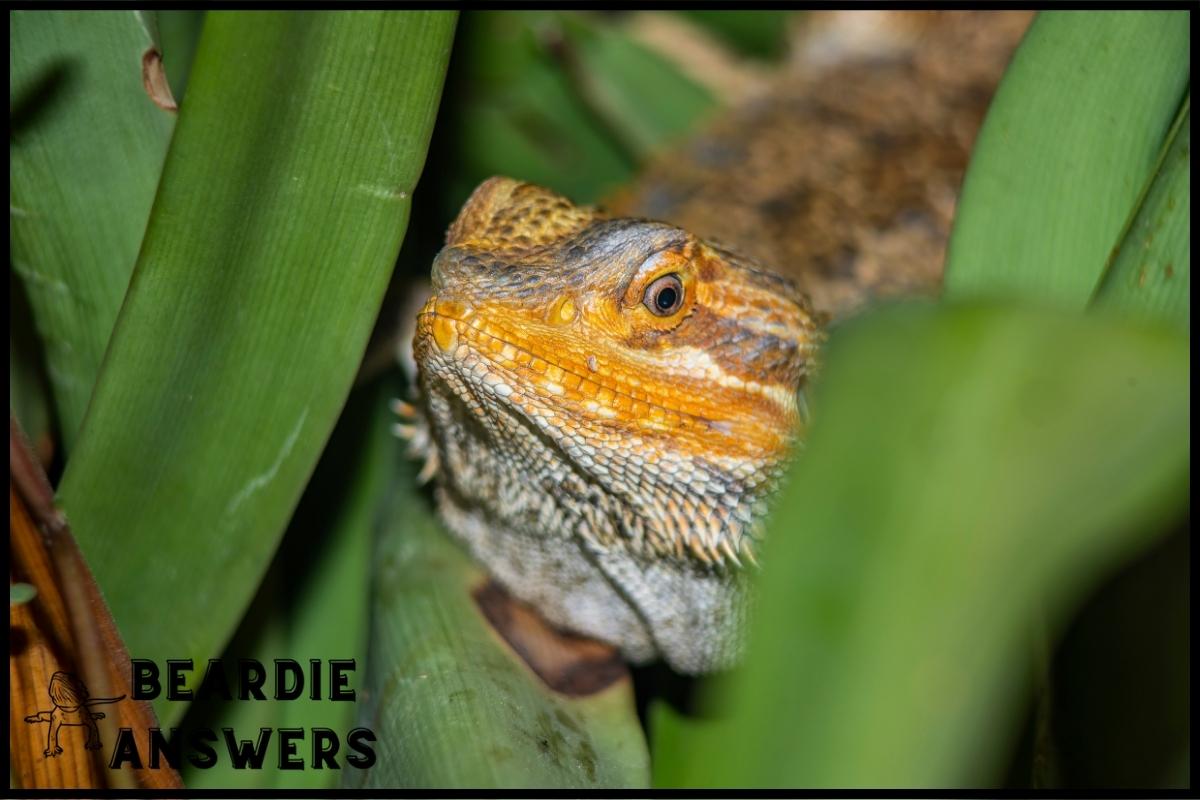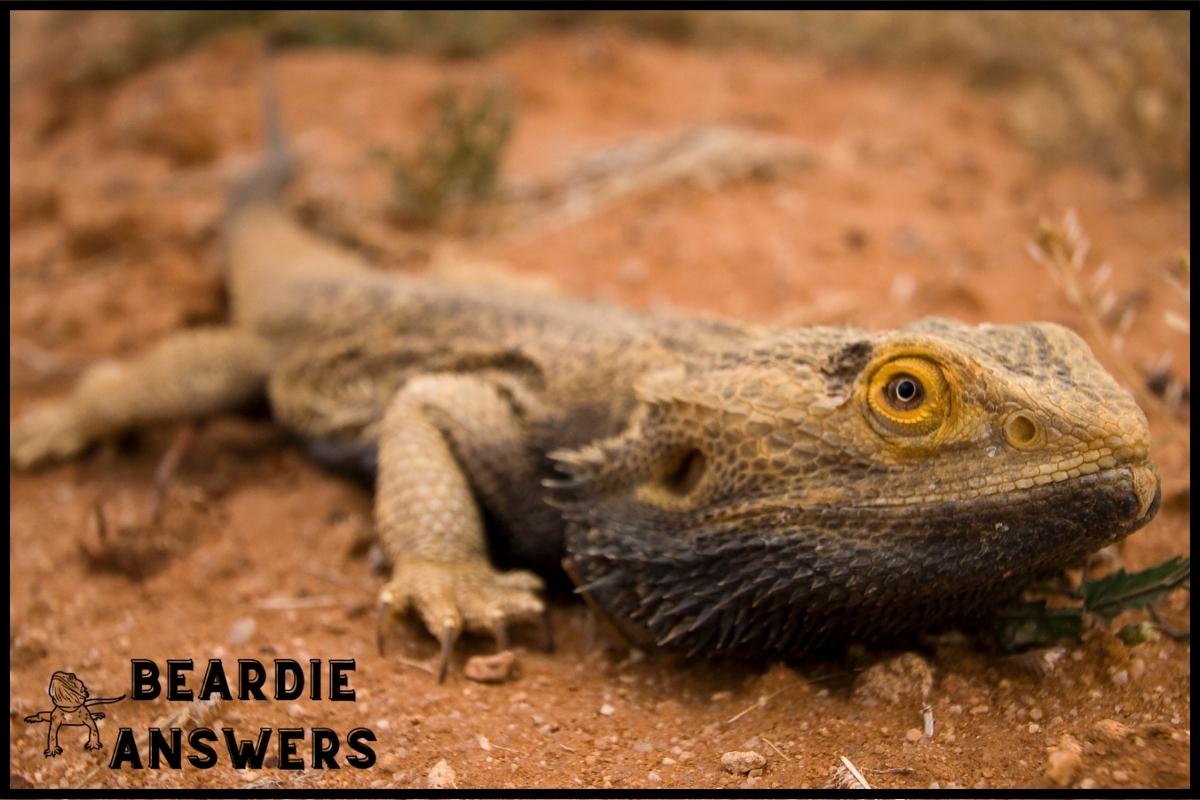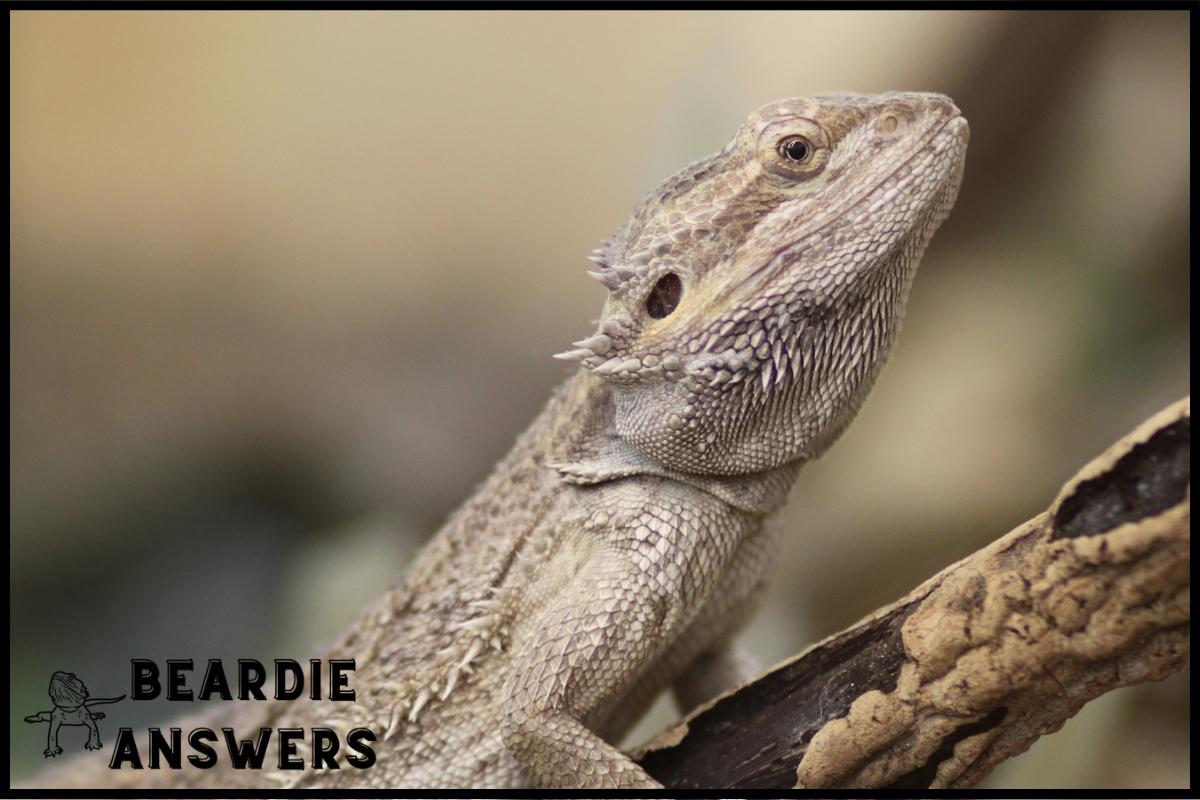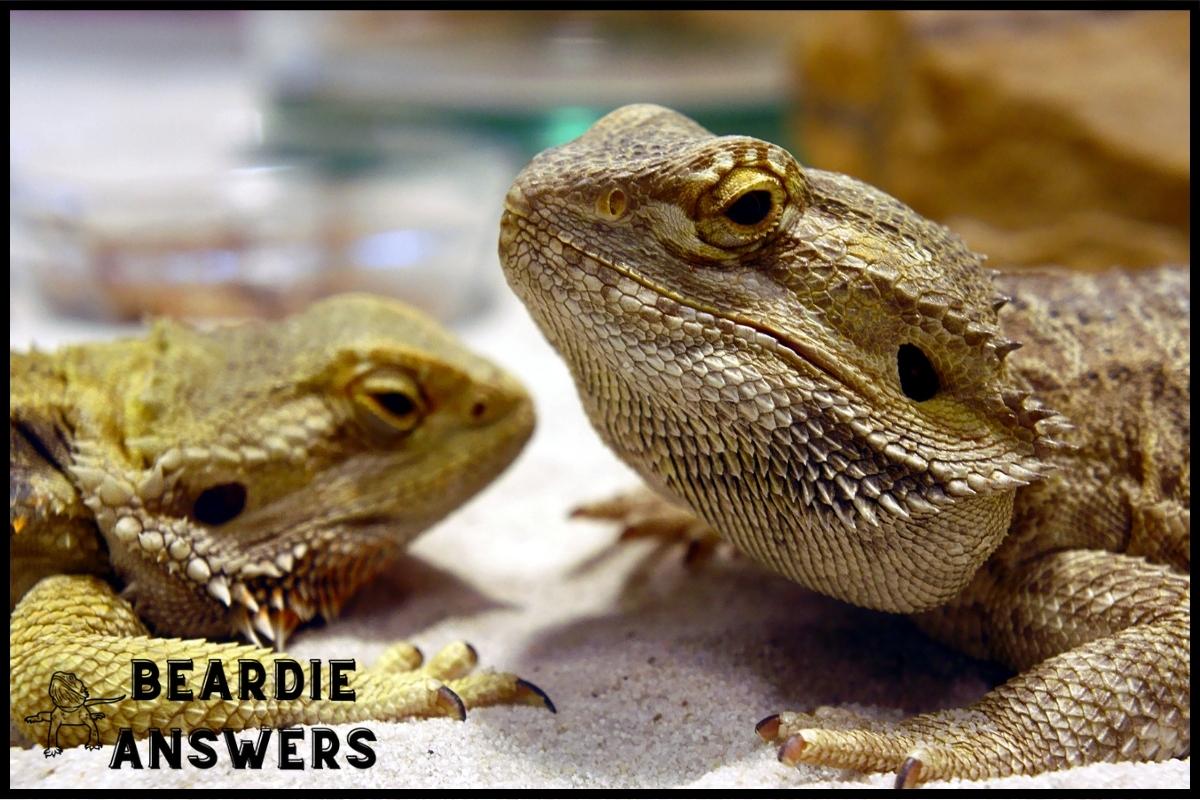Bearded dragons are a type of reptile that are commonly kept as pets. They belong to the family Agamidae, and are native to Australia. Bearded dragons are known for their unique appearance, which includes a spiny, beard-like projection under their chin.
What You'll Learn
Characteristics Of Reptiles
Reptiles are one of the most fascinating creatures on Earth. From the slithering cobra to the scurrying gecko, these animals have an almost magical quality that can captivate even the least interested observer. With a seemingly infinite variety of locomotion styles and shedding cycles, reptiles appear like nothing else in nature! They’re so unique and special it’s as if they come from another world entirely.
Bearded dragons are one such reptile species. These lizards inhabit dry arid regions throughout Australia where they live amongst the desert shrubbery, digging burrows and living solitary lives. They’re characterized by their distinctive spiny scales which give them not only protection against predators but also a way to regulate body temperature.
Their physical anatomy is well adapted for life in harsh climates—from wide feet ideal for walking on sand to eyelids designed to keep out dust particles during high winds.
It’s clear that bearded dragons have developed complex behaviors and structures over thousands of years to survive in some of the toughest environments imaginable – truly remarkable when you think about it!
Moving forward let us take a closer look at what makes up this amazing creature.
Anatomy Of A Bearded Dragon
Skeletal structure wise, a bearded dragon has a slender, long body with a tail nearly as long as its body. It’s got five toes on its front feet and four on its hind feet, plus strong claws to help it climb.
Their scales are quite small and granular, providing them with a protective armor. They have a row of spines down their back and a distinctive ‘beard’ of spikes beneath their chin.
Bearded dragons come in a variety of colors, from earthy browns and oranges to bright pinks and purples. They also have intricate patterns on their skin, making them quite a striking reptile.
Skeletal Structure
The skeletal structure of a bearded dragon is made up of many bones that are necessary for their survival. The development of these bones is impacted by the temperature, as it helps to regulate their growth rate and size.
For example, when kept at temperatures below 80°F (27°C) during incubation, the hatchlings will grow more slowly than if they were kept slightly warmer. This process ensures that the dragons develop properly so they can live healthy lives.
As such, ensuring proper temperature regulation for your bearded dragon is key for optimal bone development. With this in mind, good care should be taken to make sure your beardie stays within the right range.
Scales
Moving on, we come to the topic of scales.
Bearded dragons have a unique type of scale that helps protect their skin from predators and harsh temperatures. These scales are part of what makes them so recognizable and can help keep them safe in the wild.
In addition, these scales also shed periodically as bearded dragons grow. This process is known as skin shedding and it’s an important part of your dragon’s health and well-being.
Shedding should occur naturally but if you notice any irregularities or problems with your dragon’s shedding then consult your vet for advice.
All in all, taking good care of your beardie’s scales is essential for keeping him healthy and happy!
Coloration
Now let’s move on to coloration.
Bearded dragons come in a variety of colors, from bright yellow and orange to earthy brown and gray.
The coloring of your dragon depends largely on their environment – temperature and light levels play a big role in how they appear!
With the right tank setup, you can ensure that your beardie is showing off its true colors.
Additionally, there are certain shedding patterns that can help you identify if something isn’t quite right with your dragon; for example, darker patches indicate stress or illness.
Keeping an eye out for any changes in coloration will help you keep track of your pet’s health.
So make sure to check up on them regularly!
Behaviour And Temperament
Bearded dragons are generally considered to be one of the friendliest types of reptiles, showing little aggression towards humans or other animals. They can even become quite social with proper handling, allowing them to be great pets for those looking for a reptile companion.
When it comes to their behaviour, there are several factors that have an impact on how they interact with their environment. Beardies tend to show signs of stress if they feel threatened in any way and need regular interaction as part of their daily routine to maintain good mental health.
Here is a list of various activities that promote positive behavioural traits:
- Socializing: Bearded dragons enjoy being around people and other friendly animals such as cats and dogs. Spending time cuddling up next to an owner has been known to reduce levels of stress and make them more comfortable when interacting with others.
- Exercise: Allowing bearded dragons access to open spaces where they can explore freely helps develop natural behaviours like climbing and digging which help keep them active and healthy mentally.
- Stress Relief: Providing places for your beardie to hide or rest during periods of high activity also helps relieve psychological stress caused by too much stimulation from outside sources. This could include providing areas away from windows, creating hiding spots out of natural materials like branches or rocks, using low light settings in the enclosure at night, etc.
These activities will encourage positive interactions between owners and their bearded dragon pet while promoting physical exercise and reducing anxiety levels simultaneously. With these measures in place, beardies can live full lives filled with companionship!
Moving forward into the lifespan and growth section…
Lifespan And Growth
It is often thought that bearded dragons live relatively short lives, with a maximum lifespan of 10-15 years. However, research has shown that these reptiles can actually live up to 20 years in captivity if given the right care and nutrition. Proper habitat selection and breeding techniques play an important role in their longevity.
| Habitat Selection | Breeding Techniques |
|---|---|
| Temperature | Select healthy parents |
| Humidity | Provide adequate space |
| Lighting | Monitor hormones |
| Substrate | | |
In order for a bearded dragon to reach its full potential life span, it must have the correct environment from birth. It should be provided with proper temperature, humidity levels, lighting requirements and substrate type; this will all contribute to providing a good quality of life for your pet. Additionally, when selecting parents for breeding purposes make sure they are both healthy individuals as well as having ample space available to raise hatchlings safely. Monitoring hormone levels during breeding season also helps ensure successful outcomes.
Therefore, by understanding how essential habitat selection and breeding techniques are to a bearded dragon’s health and longevity, owners can create an optimal living environment where their pet can thrive and enjoy many happy years together. With this knowledge at hand we can now turn our attention towards diet and nutrition – two other very important aspects of keeping any reptile healthy!
Diet And Nutrition
Bearded dragons have distinct dietary needs that must be met for them to remain healthy and happy. Generally, they are omnivores; meaning they consume both plant matter as well as small insects. A balanced diet should contain a variety of leafy greens, vegetables, fruits, flowers, and occasional waxworms or other live feeders like crickets.
It is important to note that while bearded dragons will eat some types of red meats, this should only make up a very small percentage of their overall diet.
In order to ensure the best nutrition possible for your beardie, it is essential to “gut-load” live insects before feeding them to your pet. Gut-loading is a process by which the insect is fed nutritious foods such as carrots or potatoes prior to being given to your dragon so that the food itself has been enriched with vitamins and minerals from within the insect’s gut. This form of supplementing helps increase the nutritional value of whatever you feed your reptile friend.
Finally, if living in an area where fresh vegetation can’t always be found easily, then opt for commercially prepared vegetarian diets specifically designed for reptiles. These provide all the necessary nutrients without skimping on taste!
By following these guidelines and keeping track of how much your dragon eats each day (especially when introducing new items into their diet), you’ll help maintain optimal health for years to come. With proper nutrition taken care of let’s move onto caring for a bearded dragon properly.
Caring For A Bearded Dragon
Now that you understand the diet and nutrition of a bearded dragon, it’s important to know how to properly care for them. Caring for a bearded dragon is an essential part of keeping them healthy and happy.
Here are some things to keep in mind when caring for your pet:
- Housing Requirements: Bearded dragons need adequate space with enough height for climbing branches. A 20-gallon tank or terrarium will be suitable for one adult dragon, while larger tanks should be used if housing multiple dragons together.
- Temperature Control: Maintaining proper temperature ranges within the enclosure is critical to their health and well being. The ambient air temperature should remain between 78°F – 88°F (25°C – 31°C). For basking temperatures, the range should be 95°F – 110°F (35°C – 43°C).
Finally, humidity levels should stay around 40% during the day and slightly higher at night. It’s also recommended to use UVB lighting 10 hours a day as this helps them synthesize calcium from food sources more efficiently.
Taking these steps will help ensure your bearded dragon has a safe and comfortable habitat they can thrive in!
Conclusion
Yes, bearded dragons are reptiles. They have characteristics of many other reptiles such as their scaly skin and long tail. Their unique anatomy sets them apart from other reptiles, with the most notable feature being their spiny beard.
Not only do they look different but they also behave differently than other reptiles, often displaying tame behavior to humans. With proper care, a bearded dragon can live up to 10 years old while growing rapidly during its early life stages.
In order to maintain its health, it is important to feed them appropriate foods that provide essential vitamins and minerals for growth. By caring for these amazing creatures we can ensure that they will stay healthy and happy in our homes or habitats.
As owners we should take the time to learn about the needs of a bearded dragon so that we can properly meet all of its needs! So if you’re looking for an interesting reptile pet then consider bringing home a bearded dragon today!

Hi! My name is Bryan, I am the “one behind the words” here are BeardieAnswers.com. I believe that providing quality care and nutrition is the best way to ensure the health of your pet. Every beardie is special and deserves the best care and attention. If you have questions about your bearded dragon, please don’t hesitate to ask! View My Full Author Page




